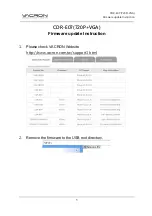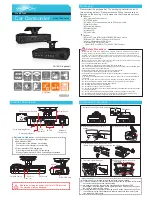
56
ķ
Settings on the camera
Set your camera to Program “P” or a Subject Program Mode (such as Land-
scape, Portrait, Sports, etc.). Select the autofocus mode “Single-AF (S)” on
the camera. Please refer to the camera’s operating instructions for the setting
procedure.
Use a tripod for the „Night Shots Program“ to avoid the danger of
camera shake in connection with slow shutter speeds!
Settings on the flash unit
Set the „TTL“ mode on the flash unit (see 4.1).
Some cameras automatically switch the flash unit to TTL flash mode
when in Program “P” or a Subject Program Mode.
Having completed the above settings, problem-free flash photography can
commence as soon as the flash unit indicates flash readiness (see 5.1).
Please observe the hints given for PA and PS program control in sec-
tion 6.1.
4. Operating modes of the flash unit
4.1 TTL flash mode (Fig. 3)
For the digital cameras Dimage 5, 7 and 7i please refer to the hints
given in section 4.2 and 4.3.
The TTL flash mode is a very simple way to achieve excellent flash shots. In
this mode exposure readings are taken by a sensor built into the camera,
which measures the light reaching the film through the camera lens. The elec-
tronic control circuit within the camera transmits a stop signal to the flash unit
as soon as the film has been exposed by the correct amount of light, thereby
instantly interrupting the flash. The advantage of this flash mode is that all fac-
tors influencing correct exposure of the film (filters, change of aperture and
focal length with zoom lenses, extensions for close-ups, etc.) are automatically
taken into account. You need not worry about the flash, the camera’s electro-
nic system automatically determines the correct amount of flash light required.
For the maximim flash range please observe the distance given in the LC dis-
☞
☞
☞
☞
play of the flash unit (see 5.4). If flash exposure was correct, the LC display of
the flash unit indicates „o.k.“ for about 3 sec. (see 4.1.3).
The TTL flash mode is supported by all camera modes (such as Program “P”,
Aperture Priority Mode “A”, Shutter Priority Mode “S”, Subject Program
Modes, Manual Mode “M”, etc.).
To test the TTL function a film must be loaded in the camera. When
selecting the film please check whether limits regarding maximum film
speed or ISO value (e.g. maximum ISO 1000) are applicable to the
given camera when in TTL mode (refer to the camera’s operating in-
structions)!
Setting procedure for TTL mode
Various cameras automatically activate TTL flash operation on the
flash unit when in Program “P” or a Subject Program Mode.
• Turn on the flash unit by its main switch.
• Continue depressing the „Mode“ key until „TTL“ flashes on the LC display.
• The setting becomes immediately effective. The LC display returns to its nor-
mal state after approx. 5 sec.
Pronounced differences in contrast, e.g. a dark subject in snow, may make it
necessary to correct the exposure settings (see 4.1.2).
4.1.1 Automatic TTL fill-in flash in daylight (Fig. 5 and 6)
Most cameras automatically activate the fill-in flash mode in daylight (see camera’s
operating instructions) when in Program “P” or a Subject Program Mode.
Fill-in flash overcomes troublesome dense shadows and produces a more
balanced exposure between subject and background with contre-jour shots.
The camera’s computer-controlled metering system sets the most suitable
combination of shutter speed, working aperture and flash output.
Ensure that the contre-jour light source does not shine directly into the
lens as this will mislead the camera’s TTL metering system!
In this instance there is no setting or display on the flash unit for TTL fill-in flash.
☞
☞
☞
54 AF-1 M 03.08.2004 10:53 Uhr Seite 56















































